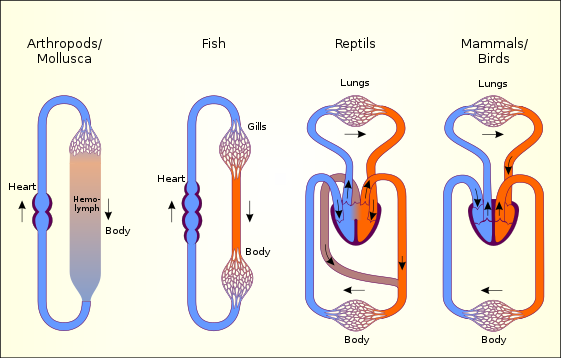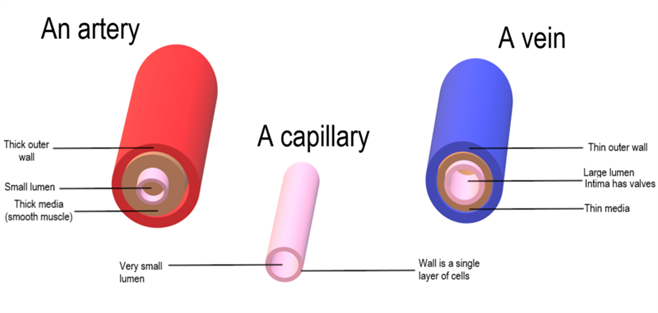PDF chapter test TRY NOW
In the previous theory, we saw that the human heart is divided into the left side heart and right-side heart. Have you wondered why there is a separation of the heart into the left side and right-side heart?
Why is the heart divided into chambers?
The separation of the heart is important to avoid the mixing of oxygenated and deoxygenated blood. The separation also allows for an efficient supply of oxygen to the body.
This is beneficial in animals with high energy requirements, such as birds and mammals. They use energy to maintain their body temperature. However, in animals that do not use energy for maintaining body temperature (such as amphibians), the body temperature is determined by the environmental temperature.
Amphibians and reptiles have a three-chambered heart that tolerates some mixing of oxygenated and deoxygenated blood. While in other vertebrates, blood goes through the heart twice during each cycle of passage through the body. This is called double circulation.
Circulation of blood in different organisms
All the vertebrates have a chambered and muscular heart.
1. Aquatic organisms like fishes have only two chambers. They have an atrium and a ventricle. The deoxygenated blood from the heart is pumped to the gills, where it is oxygenated there. Blood from gills is sent to various parts of the body.
Thus, in fishes, blood goes through the heart only once and is called single circulation.
Deoxygenated blood from heart Oxygenation of blood in gills Oxygenated blood Various body parts Deoxygenated blood from the different body parts Heart
2. Amphibians and reptiles (except crocodile) have three-chambered heart. Two atria and one ventricle are present. Left atrium receives oxygenated blood from lungs or skin (depending on the organism). In contrast, the right atrium receives deoxygenated blood from the various body parts.
3. Crocodiles, birds and mammals have a four-chambered heart. Two atria and two ventricles are present. There is no mixing of the oxygenated and deoxygenated blood in the ventricles. Thus, two separate circulatory pathways are present.

Circulation in different organisms
2. Blood and its vessels
We have already discussed blood, the components of blood and the role of blood in transportation. The blood vessel supplies blood throughout the body of an organism.
Oxygenated and deoxygenated blood is transported to the different parts of the body through blood vessels called arteries and veins.
Arteries
Arteries carry oxygenated blood from the heart to the different parts of the body.
- They have thick, elastic walls as blood emerges from the heart under high pressure.
- Arteries are narrow in size as the blood flows quickly through them.
Veins
Veins collect the deoxygenated blood from different organs and pour it into the heart.
- Since they collect blood from the body parts, they are wider.
- Veins do not have thick walls as the blood is not under pressure.
- They have valves that prevent the backward flow of blood.
Important!
The pulmonary artery is an exception which carries deoxygenated blood from the right ventricle to the lungs. The pulmonary vein is an exception and carries oxygenated blood from the lungs to the left atrium.
The walls of the artery and veins comprise of three coats:
1. Tunica externa - outermost coat formed by the connective tissues. They are also called tunica adventitia.
2. Tunica media - middle layer formed by elastic connective tissue and smooth muscle fibres.
3. Tunica intima - innermost coat.
Lumen is the innermost space that is lined by the endothelium of tunica interna.

When an artery reaches a tissue or an organ, it divides into smaller vessels to contact all the individual cells. Capillaries are the smallest vessel which is one cell thick. The thin wall of capillaries allows the exchange of substances between the blood and the surrounding cells. The capillaries combine to form veins that carry blood around the body.
Reference:
https://commons.wikimedia.org/wiki/File:Artery_Vein_Capillary_Comparison.png
https://commons.wikimedia.org/wiki/File:Gas_exchange_in_the_aveolus_simple_(en).svg
